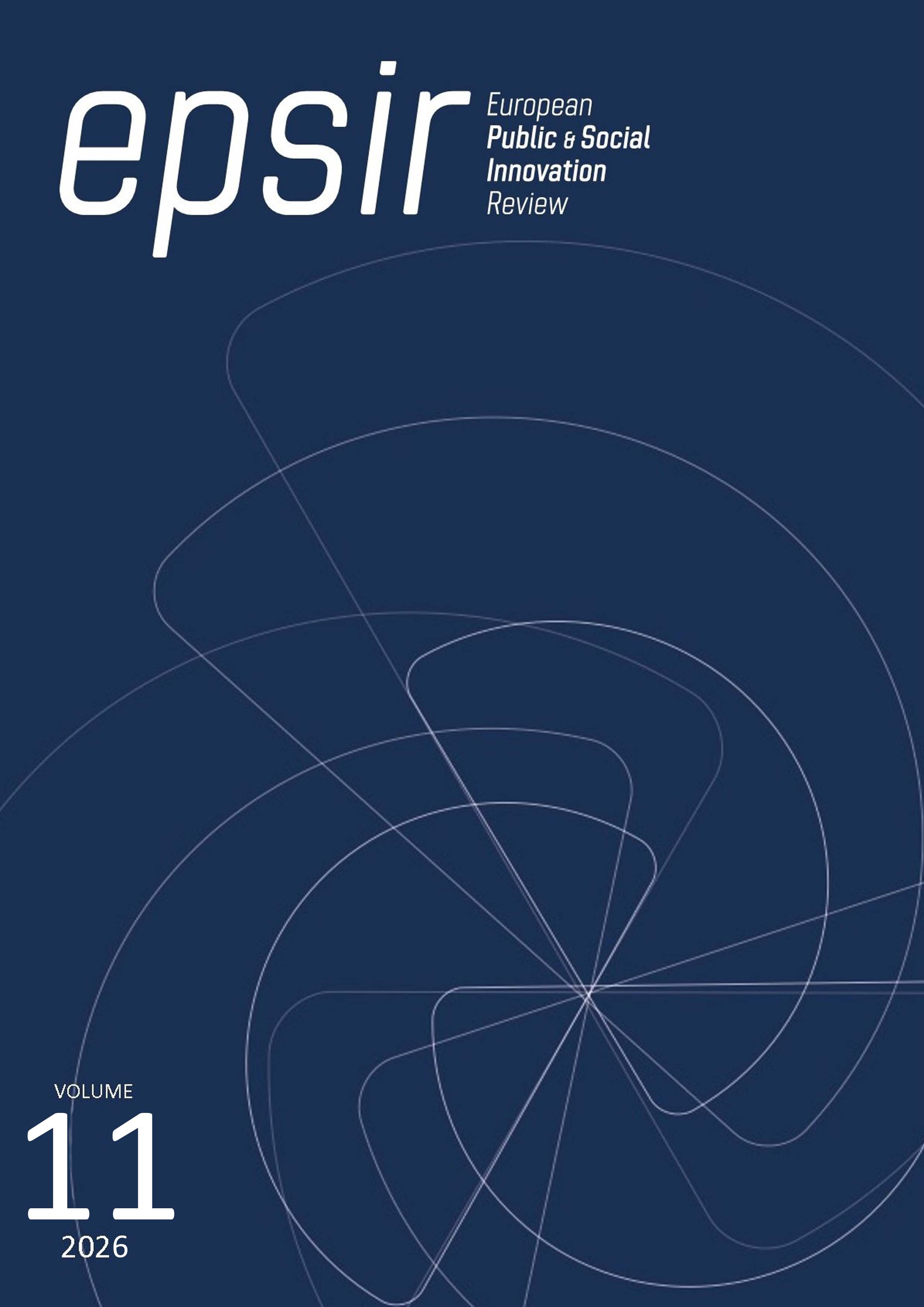Innovación Solar y Branding Universitario: Un Modelo de Triple Impacto en Ecuador
DOI:
https://doi.org/10.31637/epsir-2026-2500Palabras clave:
innovación social, branding universitario, tecnología sostenible, modelo de triple impacto, ecosistemas de innovación, transformación digital, responsabilidad social universitaria, desarrollo comunitarioResumen
Introducción: Esta investigación analiza cómo la innovación social, mediante proyectos de energía solar, influye en el posicionamiento de marca universitaria. El estudio se centra en el Proyecto Masa 1 de la Universidad Bolivariana del Ecuador (UBE), concebido como un modelo de triple impacto: social, ambiental e institucional. Metodología: Se utilizó un enfoque mixto, que combinó el análisis cuantitativo de métricas digitales con la evaluación cualitativa del impacto social. El seguimiento de indicadores clave (KPIs) en redes sociales y la medición de resultados socioeconómicos en la comunidad beneficiaria se llevaron a cabo entre 2024 y 2025. Resultados: La implementación del sistema fotovoltaico benefició a doce familias de cangrejeros, eliminando el uso de queroseno y permitiendo refrigeración sostenible para mejorar sus ingresos. La estrategia digital logró 114,000 seguidores en Facebook, un crecimiento del 93 % en YouTube y 3,740 visualizaciones específicas del proyecto. Discusión: Los resultados evidencian que los proyectos de innovación social generan sinergias entre excelencia académica y desarrollo comunitario, fortaleciendo la reputación institucional. Conclusiones: El modelo de triple impacto muestra cómo las universidades pueden liderar iniciativas sostenibles y replicables que integren innovación social y posicionamiento estratégico de marca en la educación superior.
Descargas
Citas
ABET. (2024). Accreditation criteria for engineering programs. https://www.abet.org/accreditation/
Agencia Internacional de Energía. (2020). World Energy Outlook 2020. https://www.iea.org/reports/world-energy-outlook-2020 DOI: https://doi.org/10.1787/557a761b-en
Altbach, P. G., Smith, M. y Johnson, K. (2024). Global trends in higher education digitalization. Elsevier.
Álvarez-Flores, P. y Núñez-Gómez, M. (2023). Evolving social media preferences in higher education: A generational study. Social Media & Education Quarterly, 29(4), 312-328. https://doi.org/10.1177/SMEQ.2023.345678
Barros, C. y Turpo, O. (2017). La formación en el desarrollo del docente investigador: una revisión sistemática. Revista Espacios, 38(45), 11. https://www.revistaespacios.com/a17v38n45/17384511.html
Banco Mundial. (2021). Access to electricity (% of population). https://data.worldbank.org/indicator/EG.ELC.ACCS.ZS
Bielefeldt, A. R., Wilson, D., Sattler, M. y Mitchell, T. (2023). Project-based learning for complex problem-solving. Journal of Engineering Education, 112(4), 789-805. https://doi.org/10.1002/jee.20567 DOI: https://doi.org/10.1002/jee.20567
Brundiers, K., Barth, M., Cebrián, G., Cohen, M., Diaz, L. y Doucette-Remington, S. (2021). Community-engaged learning for sustainability education. Sustainability Science, 16(4), 1123-1138. https://doi.org/10.1007/s11625-021-01060-4 DOI: https://doi.org/10.1007/s11625-021-01060-4
Chapleo, C. y Clark, P. (2024). Living brand theory in higher education. Journal of Marketing for Higher Education, 34(1), 45-61. https://doi.org/10.1080/08841241.2024.567890
Cheng, X. y Zhang, Y. (2024). Video content engagement in academic environments: Patterns and implications. International Journal of Educational Media, 18(1), 45-62. https://doi.org/10.1080/edumedia.2024.1234567
Deng, L. y López-Carril, S. (2024). Platform-specific strategies for institutional digital presence. Digital Strategy in Education, 11(1), 89-104. https://doi.org/10.1007/s41686-024-00123-x
García-Martínez, E. y Smith, J. (2023). Professional networking platforms in academic contexts: A longitudinal study. Higher Education Digital Presence, 15(3), 201-215. https://doi.org/10.1145/HEDP.2023.4567890
Gibbons, M., Limoges, C., Nowotny, H., Schwartzman, S., Scott, P. y Trow, M. (1994). The new production of knowledge: The dynamics of science and research in contemporary societies. SAGE Publications.
Hemsley-Brown, J. y Goonawardana, S. (2024). Strategic university branding in digital ecosystems. Higher Education Policy, 37(2), 1-22. https://doi.org/10.1080/13583883.2024.123456
INEC. (2022). Encuesta nacional de condiciones de vida (ENCONV). https://www.ecuadorencifras.gob.ec/encuesta-nacional-de-condiciones-de-vida/
IRENA. (2023). Renewable energy statistics 2023: Latin America and the Caribbean. International Renewable Energy Agency. https://www.irena.org/publications/2023/Jul/Renewable-energy-statistics-2023
Kaplan, A. M. y Haenlein, M. (2010). Users of the world, unite! The challenges and opportunities of social media. Business Horizons, 53(1), 59-68. https://doi.org/10.1016/j.bushor.2009.09.003 DOI: https://doi.org/10.1016/j.bushor.2009.09.003
Kim, H. y Williams, R. (2024). Short-form video content in institutional communication: Impact and effectiveness. Digital Education Review, 12(4), 78-93. https://doi.org/10.3916/DER-2024-089
Martínez-López, A. y Johnson, B. (2023). Real-time communication in academic social networks. Journal of Digital Academic Communication, 8(2), 156-170. https://doi.org/10.1016/j.jdac.2023.789012
Mastrorillo, M., Luo, G. L., Ramos, V., Tian, W. y Zhang, P. (2016). The impact of energy access on economic development: A review of the evidence. Energy Policy, 94, 25-34. https://doi.org/10.1016/j.enpol.2016.03.018 DOI: https://doi.org/10.1016/j.enpol.2016.03.018
Ministerio de Energía y Recursos Naturales No Renovables. (2023). Reporte de cobertura eléctrica en Ecuador 2022. Gobierno del Ecuador. https://short.do/FvqVx4
Oca Rojas, Y. M., Silupu, W. M. C., Romero, R. M., Jonathan, C. T. y Bastidas, C. B. (2020). Information technologies for the formation of socio-productive networks: Theorical reflections. RISTI - Revista Iberica de Sistemas e Tecnologias de Informacao, 2020(E31), 151-160. https://short.do/1HPiwL
Oliveira, R. y Chen, W. (2024). Integrated framework for institutional digital communication. Educational Technology Research, 33(2), 167-182. https://doi.org/10.1007/s40593-024-00456-y
Ramírez-Correa, P. y Thompson, K. (2023). Metrics and indicators for educational social media success. Journal of Educational Analytics, 22(3), 234-249. https://doi.org/10.1016/j.jedanal.2023.567890
Shephard, K. y Furnari, M. (2023). Four dimensions of modern university social responsibility. Higher Education, 85(3), 567-582. https://doi.org/10.1007/s10734-023-01051-7 DOI: https://doi.org/10.1007/s10734-023-01051-7
United Nations. (2023). The sustainable development goals report 2023: Special edition. https://unstats.un.org/sdgs/report/2023/
Whelan, S. y O'Sullivan, D. (2014). The role of social media in building a university's brand. Marketing Intelligence & Planning, 32(2), 141-155. https://doi.org/10.1108/MIP-09-2012-0096
Descargas
Publicado
Cómo citar
Número
Sección
Licencia
Derechos de autor 2025 Mónica Molina-Barzola, Alexandra Yépez-Vera

Esta obra está bajo una licencia internacional Creative Commons Atribución-NoComercial-SinDerivadas 4.0.
Authors who publish with this journal agree to the following terms:- Authors retain copyright and grant the journal right of first publication with the work simultaneously licensed under Creative Commons Non Commercial, No Derivatives Attribution 4.0. International (CC BY-NC-ND 4.0.), that allows others to share the work with an acknowledgement of the work's authorship and initial publication in this journal.
- Authors are able to enter into separate, additional contractual arrangements for the non-exclusive distribution of the journal's published version of the work (e.g., post it to an institutional repository or publish it in a book), with an acknowledgement of its initial publication in this journal.
- Authors are permitted and encouraged to post their work online (e.g., in institutional repositories or on their website) prior to and during the submission process, as it can lead to productive exchanges, as well as earlier and greater citation of published work (See The Effect of Open Access).



